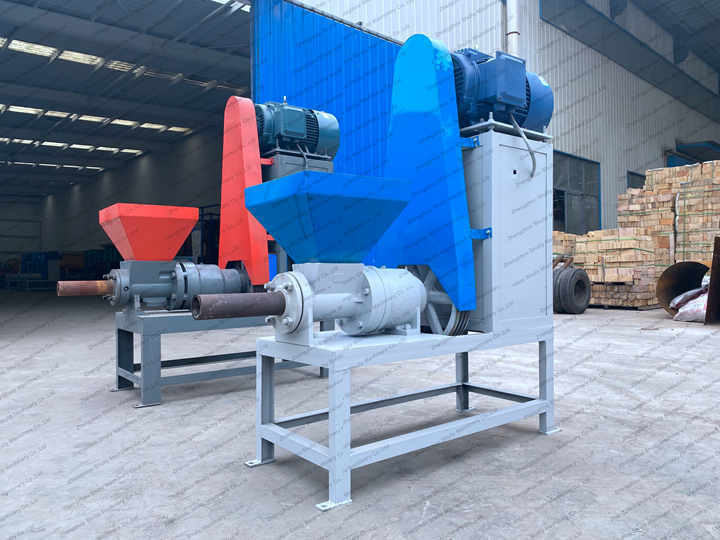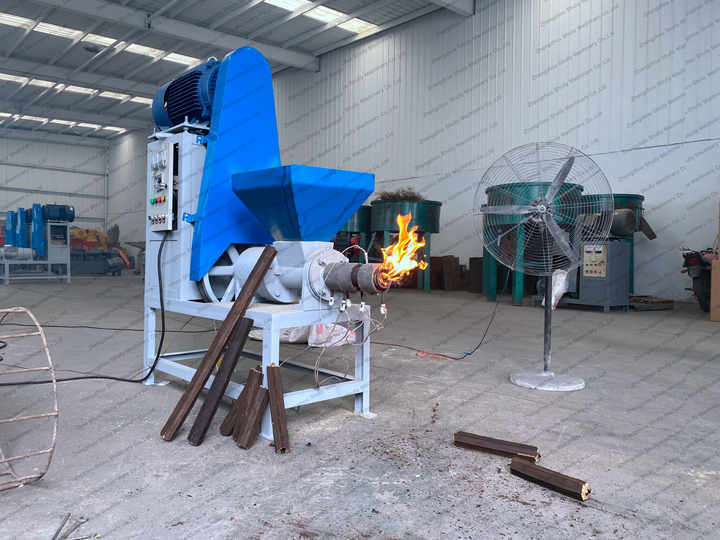木炭機器は、機械製木炭の専門的な生産のための主要な設備です。この設備には多くの部品があり、プロペラは木炭機器の脆弱な部分です。ユーザーは、操作の問題にもっと注意を払い、月に一度修理を行って、生産効率と効果を確保する必要があります。では、木炭機のプロペラが摩耗した場合はどうすればよいでしょうか?木炭機のプロペラをどのようにメンテナンスすればよいのでしょうか?
炭機の操作スキル
- 機械製炭機が長時間稼働した後は、モータープーリーの修理が必要です。オイルを追加するか、汚れを掃除するかを確認し、機械の寿命を延ばすようにしましょう。
- 時々、機械製の炭の機械は長時間作業した後にベルトが緩むことがあります。そのため、機械の速度が大幅に低下します。これが長期間の作業で出力を増やせない理由ですので、ベルトの締まり具合を確認する必要があります。
- モーターの運転に大きな負荷がかかっているかどうかを確認してください。モーターの長期的な損傷は、機械全体の作業効率に影響を与えます。パイプライン内の炭機器の可燃物の燃焼によって生成される可燃性ガスは、噴霧、冷却、浄化などが行われます。

炭機のプロペラをどのように維持管理しますか?
木炭機のプロペラの摩耗についてどうすればよいですか?木炭機の生産過程におけるプロペラの摩耗は非常に早いです。
この問題を解決するのは実際には非常に簡単です。まず第一に、原材料が乾燥していることを確認する必要があります。そうしないと、プロペラの摩耗が比較的小さくなります。また、鋸の粒度や不純物の含有量は摩耗の程度に影響を与え、モーターのサイズが小さすぎると、出力が不十分なため、馬車も推進装置の摩耗を加速させる原因となります。推進装置を溶接する際は、高炭素鋼の耐摩耗電極を選ぶ方が良いです。

木くずブリケット機の使用に関するヒント
- 機械を始動する前に、機械のオイルレベルを確認してください。一般的に、潤滑と機械のメンテナンスのために約750mlのオイルを追加します。
- 使用前に、負荷なしで10分間運転を開始し、詰まりやブロックがないか確認してください。異常が見つかった場合は、原因を特定するために機械を直ちに停止する必要があります。故障が解消された後は、運転中に該当する機器の操作ボタンを確認してください。緑のボタン(前回転)、赤のボタン(停止)、黄色のボタン(逆回転)。
- 給餌の前にプリセット温度を調整する必要があります。材料によって、ブート温度は一般的に260〜380°Cの間です。一般的に、雑木の木くずは約320°Cに設定でき、稲わらのプリセット温度は約260°Cです。他の材料は、材料の硬さに応じて調整されます。材料が硬いほど、対応する温度は約10℃上昇します。
- ロッドがあまりにも早く生産されるか、ロッドの色が黒い場合、設定温度が高すぎることを意味します。この時、温度制御テーブルを調整する必要があります。温度制御テーブルを毎回3℃下げて、ロッドの色が茶色になるまで状況を観察し続けてください。しかし、ロッド製造機の温度が低すぎてはいけません。温度が低すぎると、抵抗が大きすぎて失敗する原因になります。
- もし詰まりがあるか、ロッドの速度が遅すぎる場合、またはロッドの色が薄すぎる場合は、温度が低すぎることを意味します。ロッドが正常になるまで、高温制御メーターを毎回5℃上げてください。
- 機械が停止したとき、ホッパー内の残りの材料は基本的に排出されるべきであり、その後、逆転ボタンを押して推進シャフト内の材料を引き戻します。シャットダウン後、加熱リングは残りのロッドが炭化するまで10分間作動し続ける必要がありますので、次回使用できるようになります。
